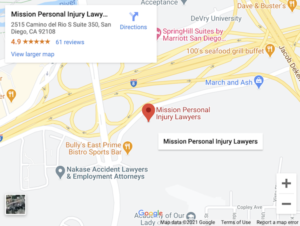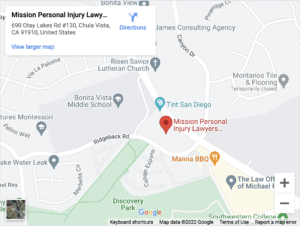
If you’ve suffered an injury, you may be entitled to damages for your financial losses and pain and suffering. Your personal injury lawyer will attempt to negotiate a reasonable settlement or litigate for a favorable jury verdict and award. To do this, it’s critical to estimate the damages you’ve incurred.
In California, there are compensatory damages and punitive damages.
The goal of compensatory damages is to put the plaintiff back in their position before the accident occurred.
These damages are further divided into:
- Economic damages. These are verifiable monetary losses like medical expenses, lost wages, and loss of use of property.
- Non-economic damages. These damages are non-monetary losses like pain and suffering.
Punitive damages, on the other hand, are awarded to punish the defendant for his conduct. They are available, in certain circumstances, when the defendant acted with malice, oppression, or fraud.
Table of Contents
Non-Economic Damages in California
These damages compensate the injured party for their suffering due to their injury. A jury understands that you experience psychological and emotional losses due to an injury in addition to your financial losses. Non-economic damages in California may be awarded for pain and suffering, inconvenience, emotional distress, loss of society and companionship, loss of consortium, injury to reputation, and humiliation.
Non-economic damages cannot be objectively verified like economic damages, which usually have clear documentation of the expenses. Instead, the jury considers the evidence and comes up with a reasonable value based on common sense, guided by the jury members’ values, beliefs, emotions, and sense of justice. As stated by the California Supreme Court, a “jury [is] entrusted with vast discretion in the amount of [non-economic] damages to be awarded.”
Pain and Suffering
Jury members, like most people, associate injuries with pain and suffering.
To reinforce the point and illustrate the severity of the pain and suffering to the jury, the following evidence may be presented:
- Medical bills
- Photographs of the injury
- Pain medication prescriptions
- Testimony from family or friends, describing how they’ve seen the plaintiff suffer.
While all these are important, nothing is more compelling than the testimony from the plaintiff. This is the best opportunity to vividly drive home the suffering the plaintiff has endured.
Some other factors that help shape the award amount are:
- Severity and extent of the injury. Some injuries can be excruciating. For instance, if the plaintiff suffered burns: are they first degree (superficial and mild) or third degree (extends through the skin)? Sometimes with third-degree burns, there is no pain due to numbness. Was this the case, or was the plaintiff in agonizing discomfort the whole time?
- Length of Recovery Time. Was there a short recovery time, or will the pain never go away? For instance, some back injuries can cause consistent pain for the rest of the plaintiff’s life. If the plaintiff’s back is seriously injured, they may face unbearable pain every time they sit down or take a step.
- Disfigurement. A disfigurement, like a facial scar or loss of an eye, can dramatically alter a person’s appearance. It may impact how they see themselves or interact with other people, causing a lifetime of emotional damage.
- Expert Testimony. To establish the prospect of future pain and suffering, expert testimony is helpful – “where an injury is subjective . . . and [the jury] cannot, with reasonable certainty, know whether or not there will be future pain and suffering, … evidence by [experts] … must be offered.”
- Quantity of medical expenses. The higher the medical costs, the higher the likely jury award.
All of this – the hard evidence like medical bills, the plaintiff’s testimony, and the other factors – can be woven together to paint a compelling picture of the plaintiff’s pain and suffering.
Loss of Consortium and Companionship
When the plaintiff suffers an injury, they may not be able to provide the same level of companionship, social interaction, love, affection, comfort, or sexual relations as before. Both the plaintiff and the spouse can claim damages for this loss.
How it All Works
Assume that Keith has a wife, Maria. One day, Keith is trimming his hedges when his neighbor Karen approaches him. Karen asks if Keith wants to see her fancy new grill. Keith agrees, and they walk over to the grill. Karen starts explaining how it works when there’s a loud explosion. The grill has exploded, shooting flames and pieces of metal everywhere. Keith is burned on his face, which disfigures him for life. A shard of metal impales his lower stomach, and he cannot have sexual relations with Maria for a year.
If Keith can prove negligence, he may have a cause of action against Karen or the grill’s manufacturer. In addition to his economic damages like medical bills, Keith can seek pain and suffering damages for the agonizing pain from the burns. He can also seek compensation for the disfigurement to his face and loss of consortium with his wife. Maria can also claim loss of consortium.
Get Help Telling Your Story
Unlike economic damages, non-economic damages are tricky to quantify. That’s where our San Diego car wreck lawyers come into play. Our attorneys at Mission Personal Injury Lawyers will take all the facts and tell a convincing story to the jury about the plaintiff’s pain and suffering. Contact our San Diego law office or call us at (619) 777-5555 today to help tell your story.


